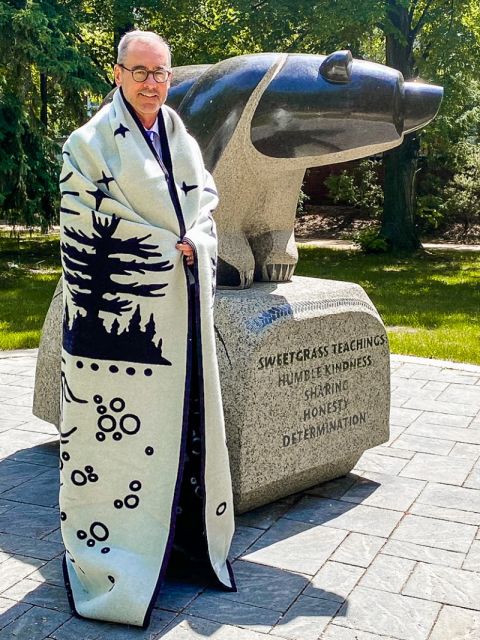
“Turning challenges into strategic transformation.” These five words could have described Bill Flanagan’s mandate as Dean of Queen’s Law during his historic 14-year tenure in the role from 2004 to 2019.
It isn’t a piece of law school history, however: it’s the call to action of the “U of A for Tomorrow” website, which details new University of Alberta President Bill Flanagan’s plan to move the university from deep budget cuts and COVID-driven instability to a new position of consolidation and strength.
Having assumed the role of President on July 2, Flanagan credits his time at Queen’s Law as having prepared him for a new challenge. “The University of Alberta has had a $110 million cut to its budget this year, with another $106 million in cuts coming in the next two years,” he says. “With uncertainty around international enrolment arising from COVID, there are also concerns about the impact this may have on tuition revenue this fall. We need fundamental systemic reform and profound change that will not only address the university's current funding crisis, but put it in a stable position to build and enhance on how the university delivers its mission and vision.”
His approach, which prioritizes structural thinking and using digital technology to boost teaching and learning, carries forward his work at Queen’s Law.
“Queens’ Law prepared me by teaching me how to make the most of digital technology and social media – I’m going to be the first president at U of A with a Twitter account!” he says. “One of the signatures of my time as Dean was the transformation of the law school in several ways. We invested in digital within the law school, adding new classroom tools and capacity for teaching and learning, including moving our first-year Introduction to Legal Skills course into a blended model of online and classroom education.
“We moved beyond the JD program to other areas: using the online Certificate in Law to make legal learning accessible to undergraduate students and lifelong learners nationally, building the online Graduate Diploma in Legal Services Management to train legal professionals with key business skills, and establishing the online Graduate Diploma in Immigration and Citizenship Law, which will provide training to immigration consultants.”
Flanagan will draw on other Queen’s Law experiences as well, as he moves to stabilize and revitalize one of Canada’s leading universities. “The challenges are similar, even if the scale is different – I’m moving from a fairly small law school to a university with almost 40,000 students, 15,000 employees and a $2 billion budget,” he says. “But regardless of size, it’s a similar model of collegial governance where you have to be mindful and respectful of stakeholders while making changes. At Queen’s Law, I was deeply interested in finding new opportunities in the digital and online space, and all of these opportunities are equally available to the University of Alberta. Connections to students, alumni, faculty and staff, and sensitivity to the unique issues in the university environment, are all essential to success in the role. While the scale is different, Queen’s was where I acquired these skills, and gave me a great platform on which to build.”
As an Alberta native, this is also a homecoming – and at a university with strong historic ties to Queen’s. “The outgoing President, David Turpin, is a Queen’s alumnus and was both the Dean of Arts and Science and later Queen’s Vice-President (Academic),” Flanagan says. “Another past president, Rod Fraser, was an economics professor at Queen’s. So in many ways, this is a way of continuing these strong connections between Queen’s and U of A, and I’m looking forward to taking what I have developed at Queen’s Law and putting it to use to the benefit of one of Canada’s truly great universities.”